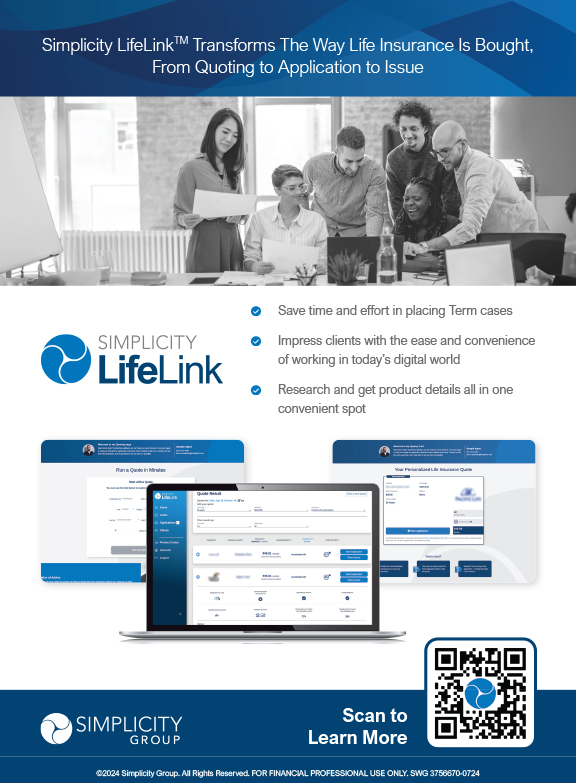Part 2 and Part 3 will be in following months’ editions.
I always get the question, “Which product do you like best, whole life insurance or indexed universal life insurance?” That’s a lot like asking me which of my two boys is my favorite. Each of them has their own strengths and each of them has their weaknesses. However, my 14-year-old is overly hormonal right now, so I don’t really care for him as of recently. Just a joke!
Anyway, as I have these conversations about IUL versus whole life, something that comes up regularly from the anti-whole-life crowd has to do with the lack of flexibility. That is what they cite over and over again, that whole life is too rigid. However, those folks are oftentimes unaware of what a person can do with the flexibility that is offered by the non-forfeiture provisions, the various dividend options, and the myriad of paid up additions structures that exist. Said another way, if you are a whole life novice that is unaware of these other levers and pulleys, then you certainly would be justified in thinking whole life is very rigid. However, there is much more to the story… For instance, can you “7-pay” a whole life policy that is a “pay to age 75” design? Of course you can. More on this in a bit.
This article is a part of a series that dives into whole life case design and the flexibility that one has when they design a policy. This particular article will largely focus on the nonforfeiture options that whole life policies have that provide flexibility in the premium structure. The following months’ editions will cover the dividend options, term riders, and paid up additions options that further add to the levers and pulleys that go into designing these cases. (Note: For a good cash value design, the nonforfeiture options along with the dividend structure, term blending, and PUA options all work together.)
By the end of this series, you should have a good understanding of how to design a case, or at least an understanding of why your IMO designed the case the way they did.
First off, the basic definition of whole life insurance is a permanent policy with a guaranteed death benefit where the cash value equals the death benefit at age 121. So, in other words, a whole life policy not only guarantees the death benefit but it also guarantees that the cash value equals the death benefit at the end-age121. So, because the insurance company is guaranteeing those two things, then of course the insurance company needs a guarantee that the premium will be paid based on how the actuaries designed the payment duration (10-pay, pay to 65, pay to 100, etc.). This is completely different from universal life where UL is an “unbundled” approach that says as long as there is cash value to support the policy charges you can pay whatever premium you like. Of course, that is a simplified definition as there are various types of universal life.
So, again, to the whole life novice, the previous leaves one believing that whole life is not “flexible” because you are “required” to pay X premium for X number of years on the policy. Well, that would be the case if it were not for the non-forfeiture provisions that are mandated by the insurance regulators.
Non-forfeiture provisions
These are provisions that whole life policies have that ensure that when the owner stops paying premium and cancels the policy that they will likely get a value out of their policy. After all, if they paid premiums for 20 years, they should be able to get something if they surrender the policy. For consumer protection purposes, states require “non-forfeiture provisions” and therefore these provisions are fairly standard and universal.
The four non-forfeiture provisions:
- Cash surrender value: This one is simple. One can surrender the policy and get the surrender value in the policy. Beware of taxes if you cash out more than what you paid in premiums!
- Extended term insurance: This is where somebody can basically trade the cash value that one would otherwise receive in #1 for a term policy for the same death benefit as the whole life policy, but for a certain duration, or “term.” Of course, the length of term is dependent on how much cash value you are “trading” it for. Hypothetical example: Let’s say a 45-year-old has a whole life policy with $1 million in death benefit and $20,000 in cash value. He does not want to continue to pay the premiums on the whole life policy, so he chooses this non-forfeiture option. The insurance company gives him $1 million of coverage for the next 11 years without him having to pay anymore premiums.
- Automatic premium loan: If you come into tough times and cannot pay the premium for that month or year, you can take a loan against the cash value to pay the premium for that month/year. That loan will carry an interest rate that will reduce the cash value and the net death benefit, at least until that loan is paid off. This can be an attractive option for somebody that comes into tough times and needs a reprieve from premium payments.
- Reduced paid up insurance: This is where the cash value that has been built up can effectively turn into a single premium paid up policy of a smaller size than the original policy. Hypothetical example: A 62-year-old has been paying premiums for 15 years now on his $1 million policy. He has been paying $15k per year and the policy is a “pay to age 100” policy. He has decided that he does not need the $1 million death benefit anymore and he certainly doesn’t want to continue to pay the premiums for another 38 years. He has built up $220,000 in cash value. So, he chooses the Reduced Paid Up (RPU) option. By doing this, he gets a death benefit of $480,000 for the rest of his life. Again, without ever needing to pay another premium. Furthermore, that “reduced paid up” policy builds cash value as well because, after all, it is just a smaller version of the original policy.
The “Reduced Paid Up” option is very frequently used in accumulation focused sales, in conjunction with the other items (dividend options, PUAs, term riders, etc.). For example, one of our favorite products that exists today for cash accumulation is a “pay to age 75” product. However, if a 45-year-old wants to cram as much money into the policy over a seven-year period of time, how might he do that on a chassis that requires 30 years of premium payments? He would cram the money in over the first seven years, then in that seventh year chose a “reduced paid up” non-forfeiture option. So now you know how we are able to “short pay” a whole life policy that normally requires perpetual premium payments. Next, we will discuss how the premium is allocated for maximum accumulation. Hint: It is not 100 percent base policy!


























